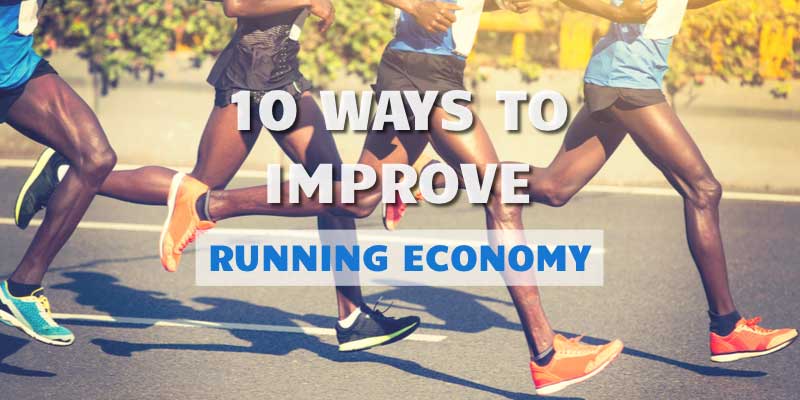Improving running economy is crucial for endurance athletes, especially those who train or compete over long durations in challenging conditions. The energy cost of running at submaximal speeds can significantly influence performance, making it essential to refine not just speed or endurance but also the underlying mechanics of running efficiently. While various components such as aerobic fitness and strength play pivotal roles, developing an optimal running economy allows you to sustain effort longer and at a lower energy expenditure.
Experienced runners often overlook the subtle training adaptations that contribute to improved economy, yet these enhancements are vital for enduring performance. Gradual increases in training mileage are foundational. Over years of consistent, moderate-intensity work, athletes can refine their running techniques and boost aerobic efficiency. The cumulative effect of accumulating mileage is not immediately apparent but manifests over time, paving the way for more sustainable performance during long events. This gradual refinement facilitates a transition toward more aerobic muscle fibers, which can significantly ease the overall metabolic demands while running.
Incorporating high-intensity intervals into your regimen serves as another key strategy for enhancing running economy. These sessions should not just target the paces specific to race distances but should vary in intensity, challenging both fast and slow-twitch muscle fibers. Training at velocities associated with VO2 max can yield additional gains in muscular efficiency across different paces, ultimately contributing to better performance not just at race speed but across various training intensities.
Training at race pace is essential for fine-tuning running economy. The critical point is that runners generally perform better when training at the specific speeds they’ll encounter in races. Including workouts that simulate race conditions teaches the body to operate more efficiently under the stresses of racing. These workouts instill a familiarity with the pacing and effort required during competition, which is invaluable when fatigue sets in. As an athlete becomes more accustomed to the specific demands of a race pace, muscular adaptations can lead to improved performance on race day.
Shorter, intense efforts such as sprint intervals should also feature prominently in your training. These workouts are effective for rapidly enhancing running economy by promoting speed and improving the overall neuromuscular coordination necessary for long-distance running. The use of hill repeats can further augment this effectiveness; running uphill engages critical muscles and tendons while reinforcing proper running mechanics. The aspect of technique should never be underestimated, as an athlete’s posture, arm movement, and foot strike all affect running economy. Spending time focusing on these elements can make a tangible difference in energy expenditure.
In addition to these training approaches, strength training offers significant benefits by enhancing musculoskeletal stability and efficiency. Improved coordination and stiffness of muscles and tendons can lower energy costs and allow for greater force production with minimal effort. The translation of power into forward motion is directly linked to how well and efficiently a runner can engage their strength. Combining strength work with plyometric exercises further conditions the muscles for explosive power and efficiency, which is particularly useful in the latter stages of long races when fatigue compromises form.
Recovery optimization cannot be overlooked when discussing running economy. Speedy recovery ensures that your body can withstand the rigors of high-performance training and adjust to the stresses imposed during workouts. Nutrition timing plays a fundamental role here, as proper fueling both before and after workouts aids in replenishing glycogen stores and promoting muscle repair. Attending to gut tolerance is also key; what you eat during long runs, including the timing and types of carbohydrates ingested, can significantly influence performance. Training your gut through specific fueling strategies can ensure you avoid gastrointestinal distress on race day, allowing for uninterrupted concentration on performance.
Metabolic efficiency, particularly in maintaining prolonged energy levels, is essential for endurance athletes. This involves the tailored approach of understanding what types of fuel your body utilizes most effectively. Consistent testing during training can reveal insights into how various foods impact performance, allowing you to optimize your racing nutrition plan. Hydration strategies, personalized to your sweat rate and environmental conditions, further facilitate this metabolic efficiency, ensuring that electrolyte imbalances do not hinder your performance.
As you refine your training strategies, focus on small, incremental changes rather than attempting to overhaul your methods overnight. Awareness of technique and physiological responses to different training stimuli leads to more precise adjustments that can yield significant benefits over time. The cumulative effect of these small changes results in a more efficient and ultimately faster runner.
A practical takeaway for endurance athletes is to implement a nutrition strategy that complements your training regimen. Experiment with different food sources during longer training runs to assess what your body tolerates best and to determine an effective fueling strategy that can be sustained throughout an event. Relying on this tailored approach can ensure that you maintain energy levels without suffering from gut issues, ultimately leading to improved performance in longer races. By focusing on building your running economy through thoughtful training and nutrition, you set the stage for meeting your peak performance potential in challenging scenarios.
